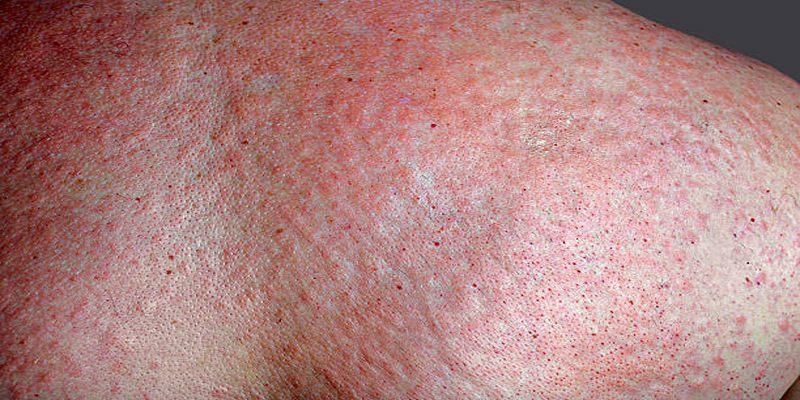Do You Really Have a Penicillin Allergy? Separating Fact from Fiction
Penicillin is one of the most widely used antibiotics, but still a surprising number of people think they are allergic to it. Studies show that 90% of individuals feel that they have penicillin allergies, not really allergies. This misconception often originates errors from childhood reactions, which are no longer relevant, or by confusing side effects with real allergic reactions. Living under an estimate of a penicillin allergy can limit treatment options and use less effective or more expensive antibiotics.
What Is Penicillin, and Why Is It Important?
Penicillin, a member of the beta-lactam antibiotic class, is celebrated for its powerful ability to combat a wide range of bacterial infections. Discovered by Alexander Fleming in 1928, it revolutionized medicine by providing a dependable cure for infections that were once life-threatening. Even today, penicillin remains a cornerstone treatment for conditions like strep throat, sinus infections, and certain skin ailments.
While widely used, penicillin is also one of the most frequently reported drug allergies. However, true penicillin allergies are rare—affecting only about 1% of the population. Despite this, many avoid penicillin based on misdiagnosed or outdated allergy concerns, limiting access to this crucial medication.
The Problem of Misdiagnosed Penicillin Allergies:
Misdiagnosed penicillin allergies present a significant challenge in modern healthcare. Many people are mistakenly labeled as allergic due to symptoms that are not true allergic reactions. For example, common side effects like nausea, diarrhea, or headaches are often confused with allergies. Similarly, rashes in childhood—often caused by viral infections—are misattributed to penicillin.
This issue is exacerbated by the lack of proper diagnostic testing. In numerous cases, a penicillin allergy is added to a patient’s medical history without confirmation through testing. Once recorded, this label can persist for years, sometimes decades, leading to unnecessary avoidance of penicillin. Consequently, patients are often prescribed alternative antibiotics that are less effective, more expensive, and carry greater risks of side effects, ultimately compromising both care quality and treatment outcomes.
What is a True Penicillin Allergy?

A true penicillin allergy occurs when the immune system reacts to the medication, triggering a response that can range from mild to severe. These allergic reactions typically appear within an hour of taking the drug. Common symptoms include:
- Skin reactions: Hives, itching, or rashes.
- Breathing difficulties: Wheezing, shortness of breath, or throat swelling.
- Anaphylaxis: A rare but life-threatening reaction requiring immediate medical attention.
It’s essential to distinguish these allergic reactions from common side effects, which do not involve the immune system. If you’ve experienced any of these symptoms after taking penicillin, consult a healthcare professional for a proper evaluation and guidance.
How to Know if You’re Truly Allergic to Penicillin
If you suspect a penicillin allergy, the best course of action is to consult an allergist or immunologist. These specialists can perform precise tests to determine if your symptoms are truly caused by an allergic reaction. The evaluation process typically includes the following steps:
- Comprehensive Medical History: Your doctor will ask detailed questions about your symptoms—what they were, when they occurred, and how long they lasted—to better understand your reaction.
- Graded Oral Challenge: If the skin test comes back negative, your doctor may administer a small, carefully monitored oral dose of penicillin, gradually increasing it to confirm whether your body can tolerate it.
These tests are safe, reliable, and provide clarity on whether penicillin is an option for you in the future.
The Risks of Avoiding Penicillin Without a Confirmed Allergy:
Avoiding penicillin without a verified allergy can lead to several serious consequences. Alternative antibiotics are often less effective, which may prolong illnesses or lead to complications. Many of these substitutes, especially broad-spectrum antibiotics, can disrupt the balance of healthy gut bacteria, increasing the risk of infections such as Clostridioides difficile (C. diff).
Additionally, overusing alternative antibiotics accelerates the global problem of antibiotic resistance. Repeated exposure to these medications allows bacteria to adapt, making infections harder to treat over time. By confirming whether you’re truly allergic to penicillin, you not only improve your treatment options but also help combat a critical public health issue.
Why Reevaluate Your Penicillin Allergy?
If you were diagnosed with a penicillin allergy years ago, it might be worth reevaluating. Studies show that up to 80% of people outgrow their penicillin allergy within a decade. Reassessing your allergy status could give you access to safer, more effective treatment options while also reducing healthcare costs, as penicillin alternatives are often more expensive. Most importantly, it ensures you receive the best possible care when it matters most.
What to Do If You Suspect a Penicillin Allergy?

If you think you might be allergic to penicillin, it’s important to take the right steps to confirm your status and ensure your safety. Here’s how to proceed:
1. Consult an Allergy Specialist
Schedule an appointment with an allergist or immunologist who has expertise in diagnosing allergies. During your visit, they will review your symptoms, medical history, and any past reactions to medications. This thorough evaluation is essential in determining whether additional testing is necessary.
2. Undergo Diagnostic Testing
Your specialist may recommend specific tests, such as a skin test or an oral challenge, to assess your sensitivity to penicillin. A skin test involves applying a small amount of penicillin to your skin and observing for a reaction, while an oral challenge requires taking a controlled dose under medical supervision. These procedures are considered the most reliable methods for confirming or ruling out a penicillin allergy.
3. Update Your Medical Records
If testing shows you are not allergic to penicillin, ask your healthcare provider to update your medical records immediately. Many individuals are mistakenly labeled as allergic, which can unnecessarily limit treatment options. Removing this label can expand your choices for effective antibiotic therapies in the future.
Conclusion:
Believing you’re allergic to penicillin can significantly impact your health and treatment options. However, proper testing often reveals that many individuals can safely use this vital antibiotic. By distinguishing myths from reality, you can make more informed healthcare decisions and avoid the risks associated with unnecessary alternative antibiotics.












